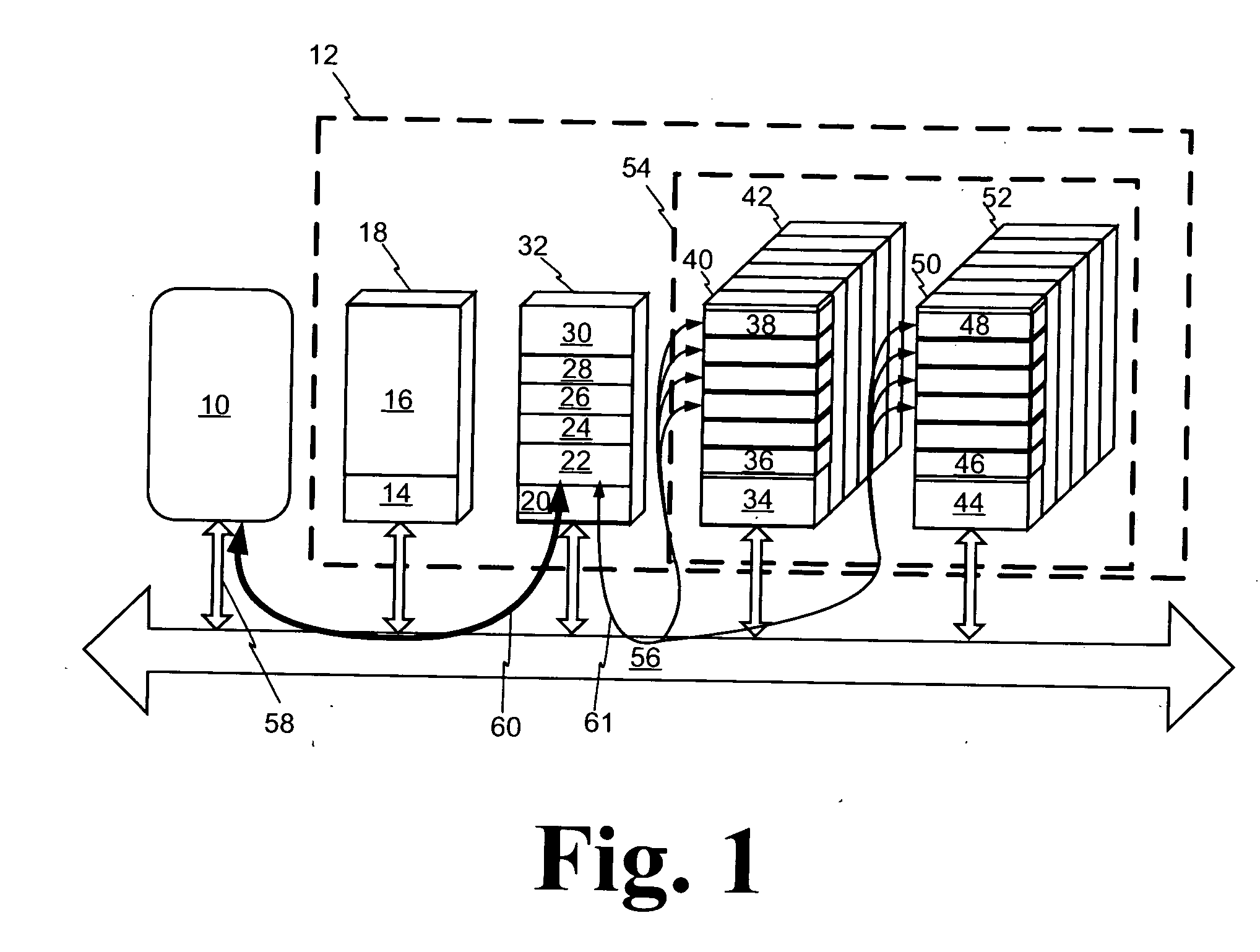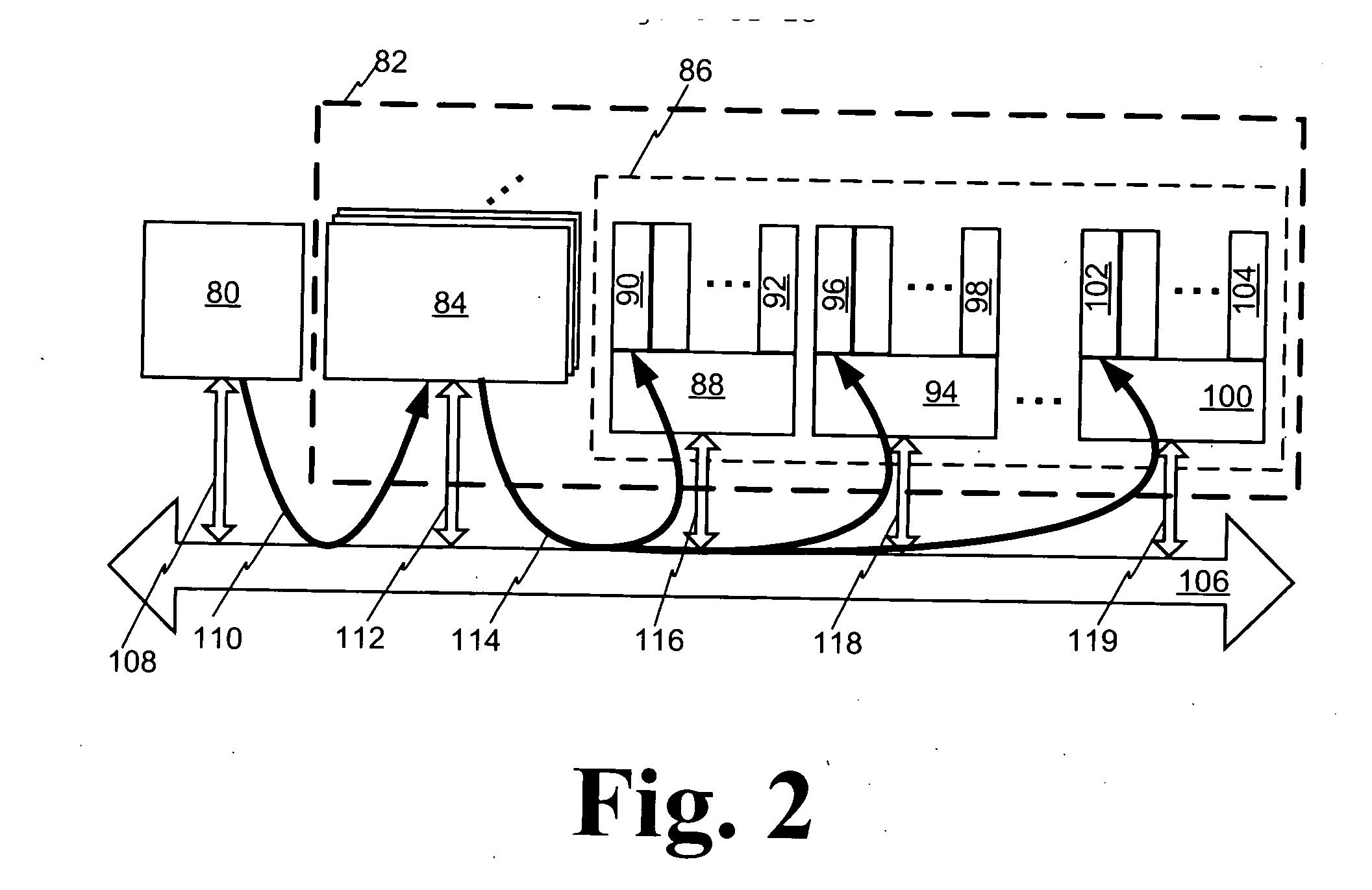Distributed processing RAID system
- Summary
- Abstract
- Description
- Claims
- Application Information
AI Technical Summary
Benefits of technology
Problems solved by technology
Method used
Image
Examples
Embodiment Construction
[0064] Referring to FIG. 1, a high-level block diagram of a scalable distributed processing network-centric RAID system architecture is shown. Network link 56 is any suitable extensible network communication system such as an Ethernet (ENET), Fibre-Channel (FC), or other data communication network. Network link 58 is representative of several of the links shown connecting various components to the network 56. Client computer system (CCS) 10 communicates with the various components of RAID system 12. Equipment rack 18 encloses network interface and power control equipment 14 and a meta-data management system (MDMS) components 16. Equipment rack 32 encloses network interface and power control equipment 20, several RPC units (22 through 28), and a RAID control and management system (RCS) 30. Block 54 encloses an array of data storage equipment racks shown as 40 through 42 and 50 through 52. Each data storage equipment rack is shown to contain network interface and power control equipme...
PUM
 Login to View More
Login to View More Abstract
Description
Claims
Application Information
 Login to View More
Login to View More - R&D
- Intellectual Property
- Life Sciences
- Materials
- Tech Scout
- Unparalleled Data Quality
- Higher Quality Content
- 60% Fewer Hallucinations
Browse by: Latest US Patents, China's latest patents, Technical Efficacy Thesaurus, Application Domain, Technology Topic, Popular Technical Reports.
© 2025 PatSnap. All rights reserved.Legal|Privacy policy|Modern Slavery Act Transparency Statement|Sitemap|About US| Contact US: help@patsnap.com



